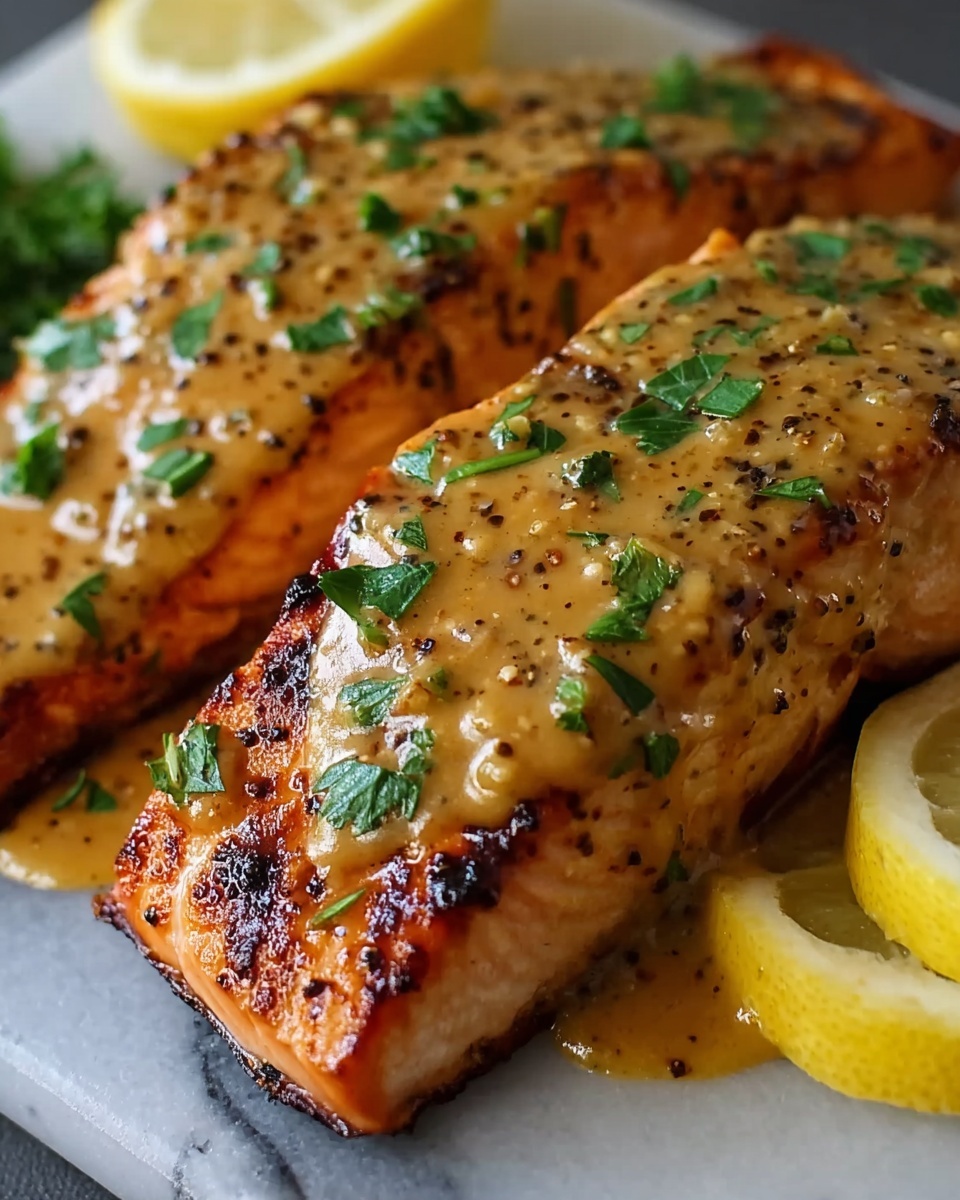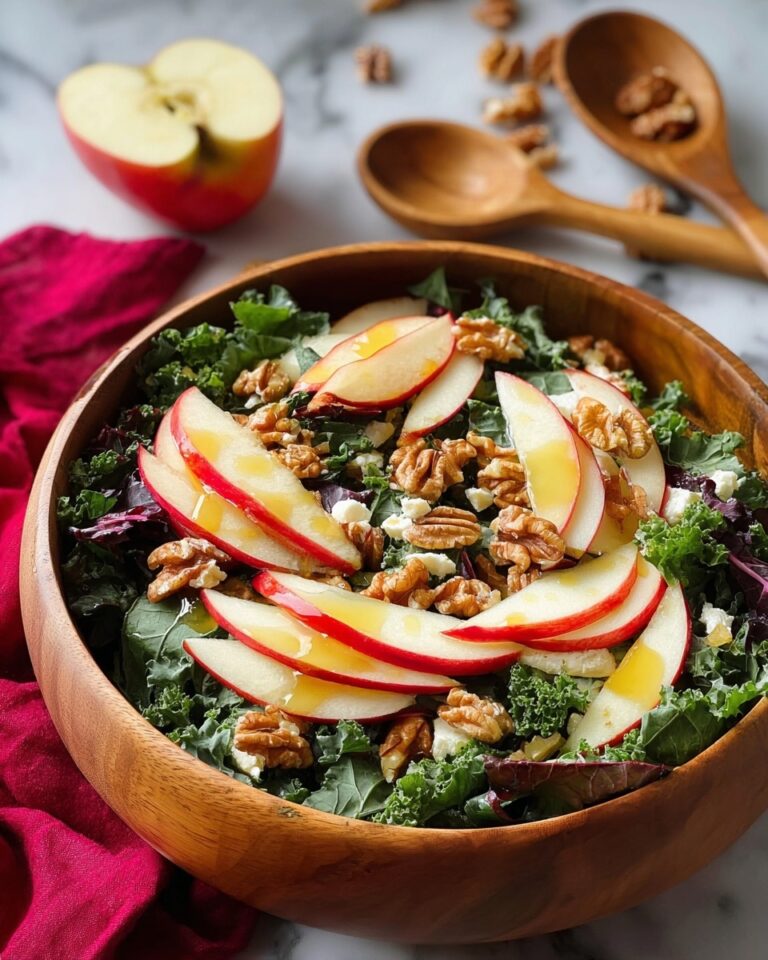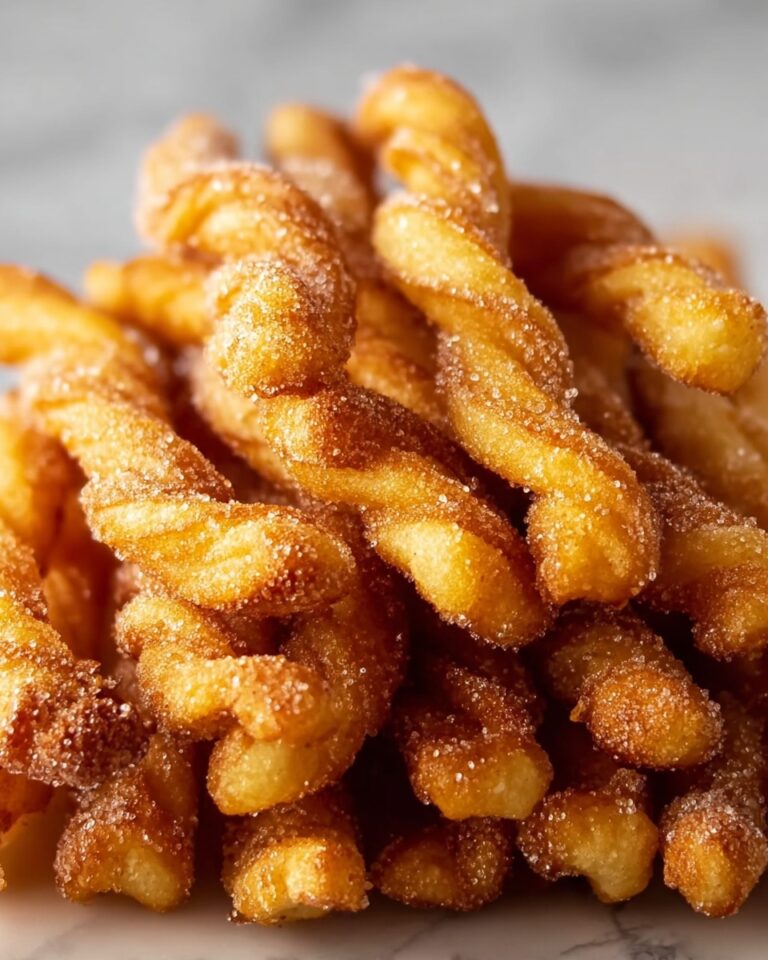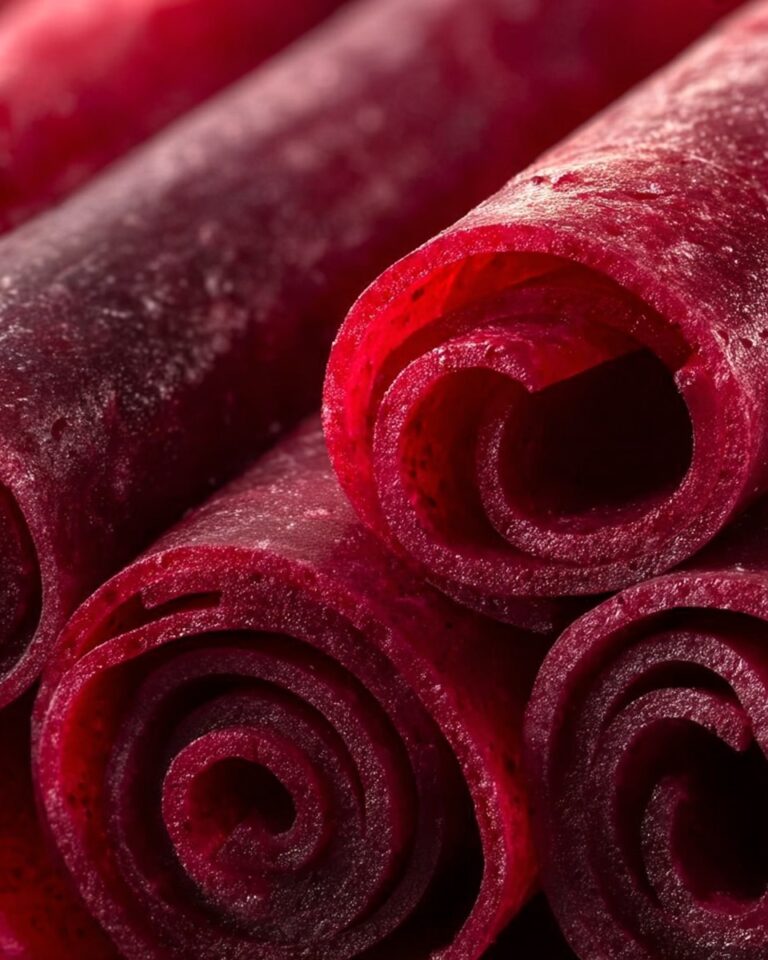If you’re craving a dish that perfectly balances bright citrus notes with the bold tang of mustard, then you’re going to fall head over heels for this Dijon Salmon with Lemon Dijon Sauce Recipe. It’s a delightful combination of tender, flaky salmon baked to juicy perfection and topped with a zesty, creamy sauce that brings everything together with a fresh pop of lemon and just the right amount of honeyed sweetness. Whether you’re cooking for yourself on a weeknight or impressing guests, this recipe is both simple and spectacular — a guaranteed crowd-pleaser that feels special without fuss.
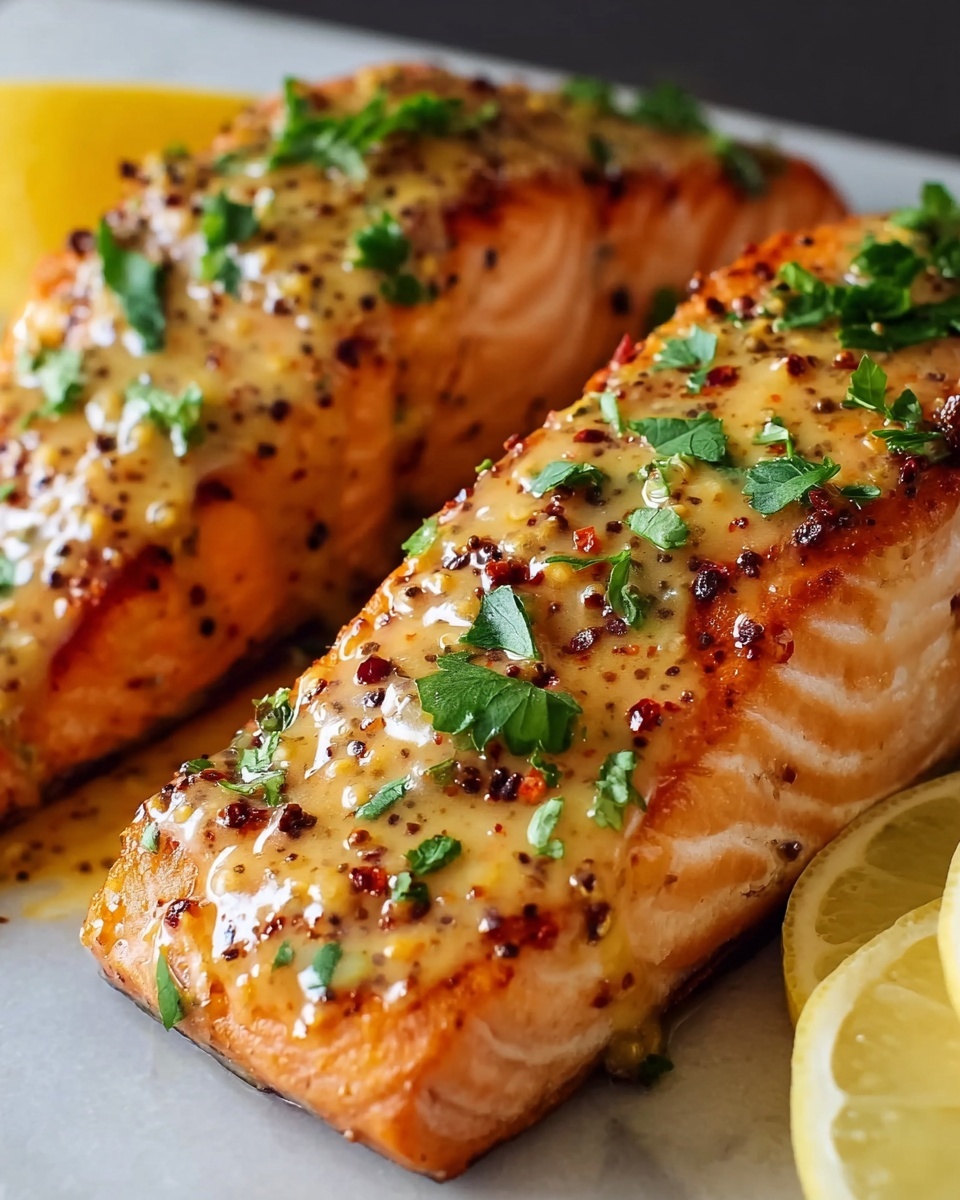
Ingredients You’ll Need
Every ingredient in this Dijon Salmon with Lemon Dijon Sauce Recipe plays a vital role in building that unforgettable flavor. From the richness of olive oil to the fresh zing of lemon zest, each element adds texture, color, and a burst of taste that complements the salmon beautifully.
- Salmon fillets: Choose fresh, skin-on fillets around 6 ounces each for optimal flavor and moisture retention while baking.
- Dijon mustard: The star of the sauce, its sharpness adds a vibrant tang that cuts through the fatty salmon.
- Olive oil: Enhances the moisture and lends a subtle fruity undertone, preventing the salmon from drying out.
- Fresh lemon juice: Brings bright acidity to balance the richness and adds a refreshing citrus note.
- Honey: A touch of sweetness counterbalances the mustard’s bite, creating a harmonious flavor blend.
- Minced garlic: Infuses the sauce with a gentle savory depth that complements both lemon and mustard perfectly.
- Lemon zest: Adds an intense lemon aroma that makes the sauce truly sing.
- Chopped fresh parsley: Provides a pop of vibrant green color and fresh herbaceous flavor as a finishing touch.
- Salt and black pepper: Essential seasoning to bring out the natural flavors of the fish and sauce.
- Lemon wedges: For serving, allowing everyone to add a little extra brightness as they like.
How to Make Dijon Salmon with Lemon Dijon Sauce Recipe
Step 1: Prepare the Oven and Sauce Mixture
Start by preheating your oven to 400°F (200°C) and line a baking sheet with parchment paper to prevent sticking and ease cleanup. Next, in a small bowl, whisk together the Dijon mustard, olive oil, fresh lemon juice, honey, minced garlic, lemon zest, and a pinch of salt and pepper. This mixture is your magic sauce, combining tart, sweet, and savory elements that will flavor the salmon beautifully both before and after baking.
Step 2: Coat the Salmon Fillets
Place the salmon fillets skin side down on your prepared baking sheet. Spoon half of the Dijon mustard mixture over the tops, spreading it evenly to create a glossy coating. This layer will help lock in moisture while infusing the salmon with those delightful flavors as it bakes.
Step 3: Bake Until Perfect
Bake the salmon in your preheated oven for 12 to 15 minutes. You’ll know it’s done when the fish flakes easily with a fork but still feels tender, never dry. The high heat cooks it quickly to a juicy finish while caramelizing the mustard glaze just enough to boost the taste.
Step 4: Warm the Remaining Sauce
While the salmon is baking, take the remaining half of your Dijon sauce mixture and warm it gently in a small saucepan over low heat. This step intensifies the flavors and turns it into a luscious lemon Dijon sauce that you’ll drizzle on top of your cooked fillets.
Step 5: Finish and Garnish
Once the salmon is out of the oven, drizzle the warmed lemon Dijon sauce generously over each fillet. Sprinkle with the chopped fresh parsley for a touch of color and freshness. Serve immediately with lemon wedges on the side for anyone who wants an extra squeeze of citrus zing.
How to Serve Dijon Salmon with Lemon Dijon Sauce Recipe
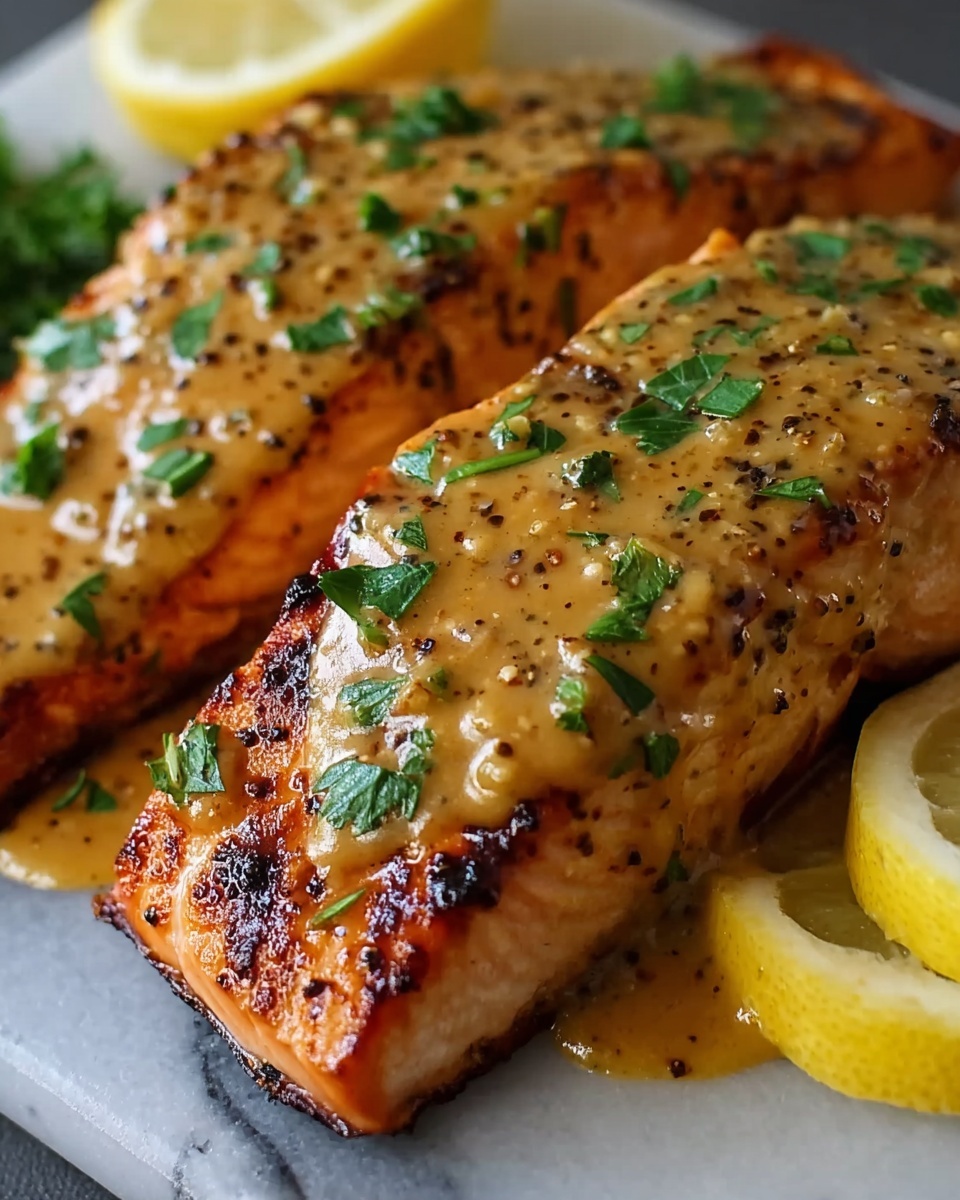
Garnishes
Fresh parsley is the perfect finishing touch, adding not only a splash of color but also a mild herbal brightness that elevates the entire dish. Lemon wedges are a must; they allow you to customize each bite with a little extra citrus sparkle, enhancing the sauce’s zestiness.
Side Dishes
This dish pairs beautifully with simply roasted vegetables like asparagus or Brussels sprouts, which bring a slight earthiness that complements the salmon perfectly. Steamed asparagus adds tender crunch and green freshness, while a fluffy rice pilaf offers a mild, comforting base soaking up the delicious sauce.
Creative Ways to Present
For a stunning presentation, serve the salmon over a bed of wild rice mixed with toasted almonds and fresh herbs, letting textures add interest alongside the bold sauce. Alternatively, plate fillets atop buttery mashed cauliflower or alongside a vibrant salad with mixed greens and pickled onions for a refreshing contrast.
Make Ahead and Storage
Storing Leftovers
Store any leftover Dijon Salmon with Lemon Dijon Sauce Recipe in an airtight container in the refrigerator. It will keep well for up to 2 days, maintaining flavor and moisture when covered properly. Be sure to separate the sauce if possible to keep textures optimal.
Freezing
While salmon is best enjoyed fresh, you can freeze cooked fillets for up to one month. Wrap each piece tightly in plastic wrap and place in a freezer bag to prevent freezer burn. Thaw overnight in the refrigerator before reheating to enjoy later.
Reheating
Reheat leftovers gently in a low-temperature oven or microwave to avoid drying out the salmon. Adding a little extra lemon Dijon sauce while reheating helps restore moisture and keeps the flavors vibrant and fresh, just like when first made.
FAQs
Can I use a different type of mustard?
While Dijon mustard offers a perfect balance of sharpness and creaminess for this recipe, you can experiment with whole grain mustard or spicy brown mustard for a different texture and flavor profile, though it will alter the final taste slightly.
Is it necessary to bake the salmon skin side down?
Yes, baking skin side down helps protect the delicate flesh from direct heat, keeping it moist and allowing the skin to crisp up slightly, which can be removed after cooking if you prefer.
Can I make the lemon Dijon sauce creamier?
Absolutely! Stirring in a tablespoon of butter or a splash of heavy cream to the warmed sauce makes it luxuriously creamy without overpowering the bright flavors.
What temperature should salmon be cooked to?
For perfectly cooked salmon, aim for an internal temperature of around 125°F to 130°F. This results in a moist, flaky texture without being overdone. The 12 to 15-minute baking time at 400°F generally achieves this for 6-ounce fillets.
Can I grill the salmon instead of baking?
Yes! Grilling adds a lovely smoky char that works well with the Dijon lemon sauce. Just brush the fillets with the mustard mixture and grill skin side down over medium heat for about 4-6 minutes per side, then drizzle with warmed sauce before serving.
Final Thoughts
There’s something truly special about this Dijon Salmon with Lemon Dijon Sauce Recipe that keeps me coming back to it time and again. Its bright, lively flavors combined with the rich, flaky salmon make it a standout dish that feels both healthy and indulgent. I encourage you to try it soon — once you do, it will quickly become one of your favorite easy dinners that’s perfect any night you want something delicious and effortlessly impressive.
Print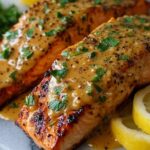
Dijon Salmon with Lemon Dijon Sauce Recipe
- Prep Time: 10 minutes
- Cook Time: 15 minutes
- Total Time: 25 minutes
- Yield: 4 servings
- Category: Main Course
- Method: Baking
- Cuisine: American
- Diet: Gluten Free
Description
This Dijon Salmon with Lemon Dijon Sauce is a flavorful, healthy main course featuring tender baked salmon fillets brushed with a tangy Dijon mustard and lemon sauce. The easy-to-make sauce combines Dijon mustard, olive oil, fresh lemon juice, honey, garlic, and lemon zest, creating a bright and zesty complement to the rich salmon. Perfect for a quick weeknight dinner or elegant meal, this recipe is gluten-free and low-carb.
Ingredients
Salmon
- 4 salmon fillets (about 6 ounces each)
- Salt and black pepper to taste
- Lemon wedges for serving
Lemon Dijon Sauce
- 3 tablespoons Dijon mustard
- 2 tablespoons olive oil
- 2 tablespoons fresh lemon juice
- 1 tablespoon honey
- 2 cloves garlic, minced
- 1 teaspoon lemon zest
- 1 tablespoon chopped fresh parsley
Instructions
- Preheat Oven and Prepare Baking Sheet: Preheat your oven to 400°F (200°C) and line a baking sheet with parchment paper to prevent the salmon from sticking and facilitate easy cleanup.
- Make the Dijon Mixture: In a small bowl, whisk together Dijon mustard, olive oil, lemon juice, honey, minced garlic, lemon zest, and a pinch of salt and pepper until the mixture is smooth and well combined.
- Prepare the Salmon: Place the salmon fillets on the prepared baking sheet skin side down. Spoon half of the Dijon mixture evenly over the tops of the fillets, ensuring each piece is well coated.
- Bake the Salmon: Bake the salmon in the preheated oven for 12 to 15 minutes, or until it flakes easily with a fork, indicating it is cooked through but still moist.
- Warm the Sauce: While the salmon is baking, warm the remaining Dijon mixture in a small saucepan over low heat to create the lemon Dijon sauce, stirring occasionally until heated through.
- Serve: Once the salmon is cooked, drizzle the warm lemon Dijon sauce over the fillets, sprinkle with chopped fresh parsley, and serve immediately with lemon wedges on the side for extra brightness.
Notes
- For a creamier sauce, whisk in 1 tablespoon of butter or a splash of heavy cream before serving.
- This recipe pairs well with roasted vegetables, steamed asparagus, or rice pilaf for a complete meal.
- To ensure even cooking, use salmon fillets of similar size and thickness.
- Adjust the honey amount to your taste preference for sweetness.

